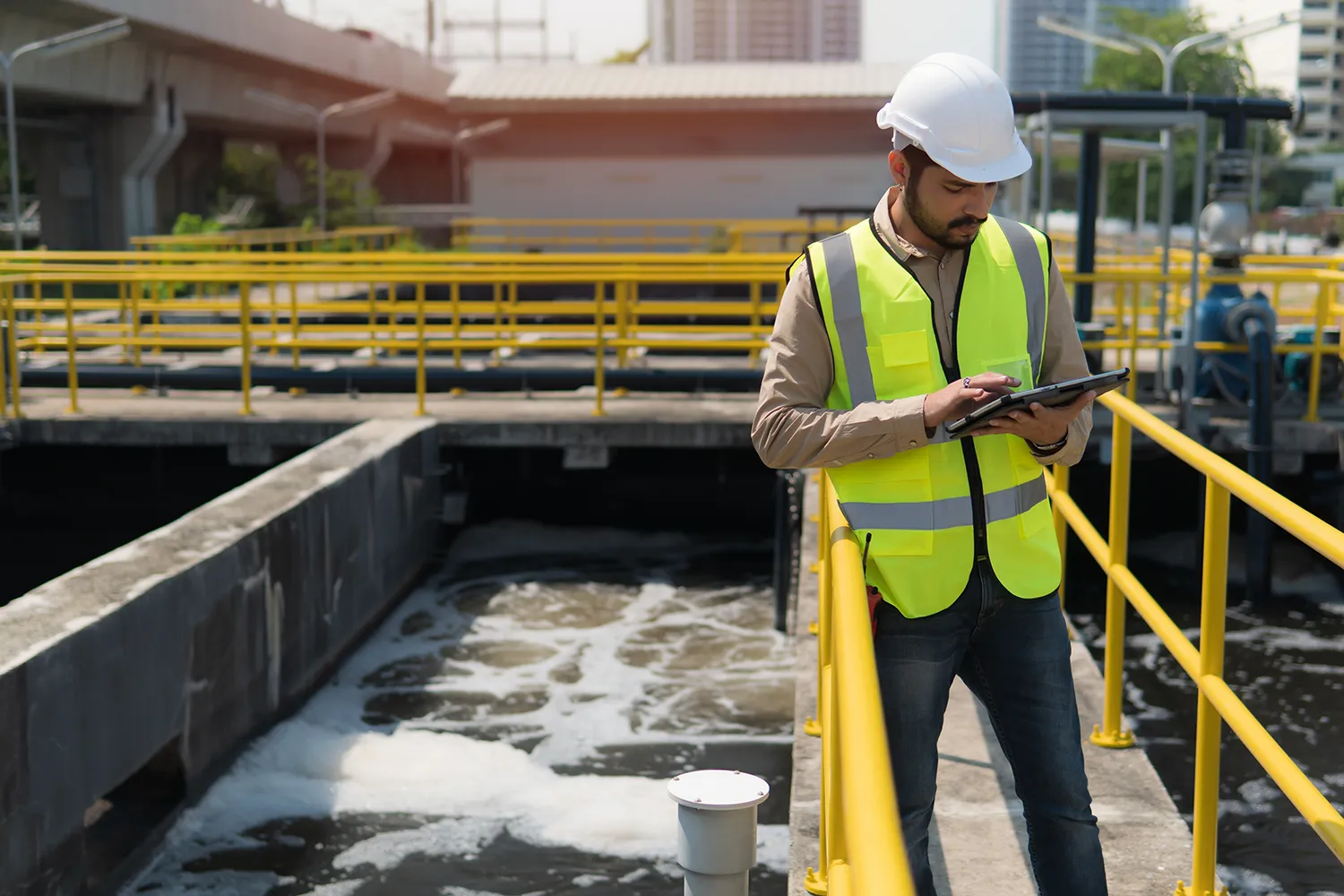Cincinnati MSD Gains Sovereignty Over IoT Sensor Data with Flowfinity Streams

Region: Cincinnati / Hamilton County, Ohio
Company Size: Enterprise
Industry: Municipal Wastewater Utility
Function: Remote Sensor Asset Monitoring, Data Validation, Installation and Inspection
Background
The Metropolitan Sewer District of Greater Cincinnati (MSD) is a public wastewater utility that provides sewer service to more than 232,000 households and businesses in Cincinnati and Hamilton County, Ohio. MSD operates and maintains over 3,000 miles of sewers (combined sanitary/stormwater and sanitary only), 100+ pump stations, nine wastewater treatment plants, three high-rate treatment facilities, and certified laboratory testing facilities.
MSD's Remote Monitoring Group plays a critical role in ensuring the operational efficiency, regulatory compliance, and strategic planning of wastewater infrastructure. From monitoring combined sewer overflows (CSOs) for EPA compliance to ultrasonic and hydrostatic level tracking, the team collects and analyzes vast volumes of environmental data from hundreds of field-installed sensors under their control.
The data they collect must be accurate to optimize daily operations and help ensure the success of capital projects including system expansion and upgrades from a physical design perspective.
MSD initially adopted Flowfinity Actions to enhance its custom workflow automation capabilities, enabling the tracking and management of maintenance work orders and assets. The Remote Monitoring Group then implemented SCADA integration for automated alerts and has since incorporated a Flowfinity Streams database to consolidate, structure and validate large volumes of remote sensor data.

Remote data collection challenges
MSD operates with several hundred remote monitoring sites, producing over 1,600 channels of raw time-series sensor data. Over time, they accumulated 100,000+ individual CSV files full of records. This large amount of data posed significant challenges from an accessibility standpoint. The remote monitoring team evaluated multiple off-the-shelf solutions for data warehousing and visualization—but none could adapt to MSD's unique workflows or provide the level of flexibility to structure their data as they desired.
Each so-called 'turnkey solution' they tried required MSD to conform to predefined workflows and data structures dictated by the vendor, rather than their user requirements, limiting the ability to their solution to their specific needs.

"Flowfinity Streams allows us to have sovereignty over our database structure and make it fit our needs rather than meet the needs of an external software vendor. We can tailor it the way we want, which really opens up the door to process optimization." Said Rob Schneider, Engineering Technical Supervisor, Remote Monitoring Group
The rigidity they experienced with off-the-shelf solutions also extended to telemetry providers. Many vendors rely on proprietary protocols that restrict sensor selection, restricting MSD's ability to choose the best equipment for each unique monitoring site.
As MSD's monitoring infrastructure grew, the need for a flexible data management platform became more apparent.

Flowfinity Streams high-volume IoT database
The Remote Monitoring Group discovered Flowfinity Actions through engineers from other City of Cincinnati departments who had already deployed field service solutions. Seeing their success, MSD then adopted the platform to develop their own custom work order management apps.
Initially chosen for its flexible workflow engine, the platform allowed subject matter experts to configure installation and maintenance workflows without writing code. This capability empowered those closest to the work to manage inspections, QA/QC, and equipment.
The introduction of Flowfinity Streams took things a step further by enabling the Remote Monitoring Group to automatically ingest, store, and analyze large volumes of time series data from their various IoT field sensors of any type from any vendor.
Collected data then flows from the sensors through environmentally sealed Ayyeka Wavelet Data Logger and Transmitter Remote Terminal Units. These RTUs are natively compatible with the Ayyeka telemetry interface, offering a hardware solution robust enough to withstand conditions in the sewer coupled with advanced telemetry capabilities.
Raw data is then formatted into the desired structure by a Python script and sent via API to Flowfinity Streams. The Streams database serves as an organized archive of both raw and processed data, allowing the team to reliably validate and store remotely collected IoT data for use by any MSD department or regulator who needs it.
Since Flowfinity Streams is integrated with Flowfinity Actions, it also allows for the display of key metadata—such as sensor location, pipe size, equipment type, and installation date— to be viewed alongside the time series feed in their visualization tools, making it much easier to interpret and identify anomalies if they occur.
"We're able to pull up the data, QA/QC it, and access all those pieces of information digitally," Rob remarked. "That's what we're planning to integrate next—automated checks tied to metadata for even more efficient analysis."
Notably, MSD's telemetry architecture is deliberately vendor-agnostic. By using Ayyeka's RTUs—which accept analog, serial, or digital signals—MSD can integrate sensors from various manufacturers, selecting the best technology for each use case without being locked into proprietary systems.

"We use Flowfinity from top to bottom, from opening a site and importing information about various assets to integrating with our telemetry provider and also our SCADA system, which is set up for automated monitoring alerts. We assign installation and inspection work orders, then review those work orders for QA and QC purposes through to the final product."

Streamlined data ingestion and integrated metadata
Flowfinity's flexibility has allowed MSD to optimize its remote monitoring workflows while gaining complete sovereignty over its data structure and storage. Now, they have greater confidence in mission-critical data used to plan and model capital projects, including physical infrastructure upgrades and maintenance, as well as EPA compliance reporting.
Key outcomes include:
Streamlined Data Ingestion: With integration from the end-point sensors through Ayyeka's telemetry interface into the Flowfinity Streams database, high-volume data ingestion is no longer an operational bottleneck. The process is more efficient, accurate, and scalable, with no manual data manipulation in CSV files.
Integrated Metadata: Flowfinity Streams integrates seamlessly with Actions to ensure users can cross-reference every data point with relevant site-specific metadata. This contextual awareness helps analysts validate data quality and make timely informed decisions.
Improved Accuracy: With the ability to visualize IoT sensor readings in context, the team is confident that the data they share to drive critical infrastructure projects is accurate at the source. Meanwhile, time spent on data validation checks has dropped significantly.
Vendor Independence: The Remote Monitoring Group is no longer limited by rigid off-the-shelf tools or proprietary sensor systems incompatible for integration. Flowfinity enables MSD to adapt and scale according to their internal requirements, rather than conform to external constraints.
Custom Workflows: MSD can now configure their field inspection, maintenance, and QA / QC processes precisely to their needs without requiring vendor intervention or straining limited software development resources.
This customization capability is crucial in a high-stakes environment where MSD must comply with stringent EPA regulations and reporting requirements. Accurate and timely data collection supports compliance and informs the organization's long-term infrastructure planning.
AI workflows and data validation
Looking ahead, the Remote Monitoring Group sees opportunities to expand its use of Flowfinity's platform—particularly through AI-driven workflows for data validation checks.
"We've got sites that have been producing monthly data for over 20 years," Rob explained. "It would be great to train an AI on that history and let it assist with QA/QC moving forward." This intelligent automation could further reduce manual review time and help detect anomalies across decades of time-series data.
MSD also continues to enhance its in-house data visualization and analysis tools, which are already integrated with Flowfinity Streams. The team anticipates even greater gains in data usability, responsiveness, and strategic insights as development progresses.
Ultimately, Flowfinity's no-code environment allows MSD to evolve its data infrastructure without the burden of writing custom software. The platform has proven to be the right fit for a highly technical operation that demands flexibility and precision at scale.
Rob sums it up best: "What first comes to mind is 'sovereignty.' We have control, and that makes all the difference."